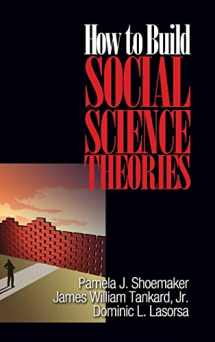
How to Build Social Science Theories
Book details
Summary
Description
As straightforward as its title,How to Build Social Science Theories sidesteps the well-traveled road of theoretical examination by demonstrating how new theories originate and how they are elaborated. Essential reading for students of social science research, this book traces theories from their most rudimentary building blocks (terminology and definitions) through multivariable theoretical statements, models, the role of creativity in theory building, and how theories are used and evaluated. Authors Pamela J. Shoemaker, James William Tankard, Jr., and Dominic L. Lasorsa intend to improve research in many areas of the social sciences by making research more theory-based and theory-oriented.
The book begins with a discussion of concepts and their theoretical and operational definitions. It then proceeds to theoretical statements, including hypotheses, assumptions, and propositions. Theoretical statements need theoretical linkages and operational linkages; this discussion begins with bivariate relationships, as well as three-variable, four-variable, and further multivariate relationships. The authors also devote chapters to the creative component of theory-building and how to evaluate theories.


We would LOVE it if you could help us and other readers by reviewing the book
Book review



